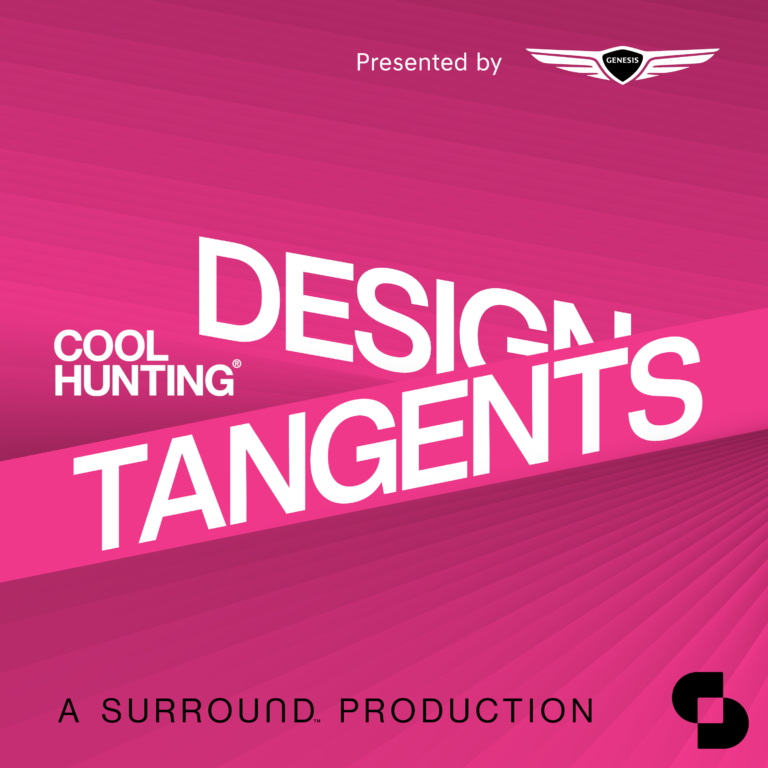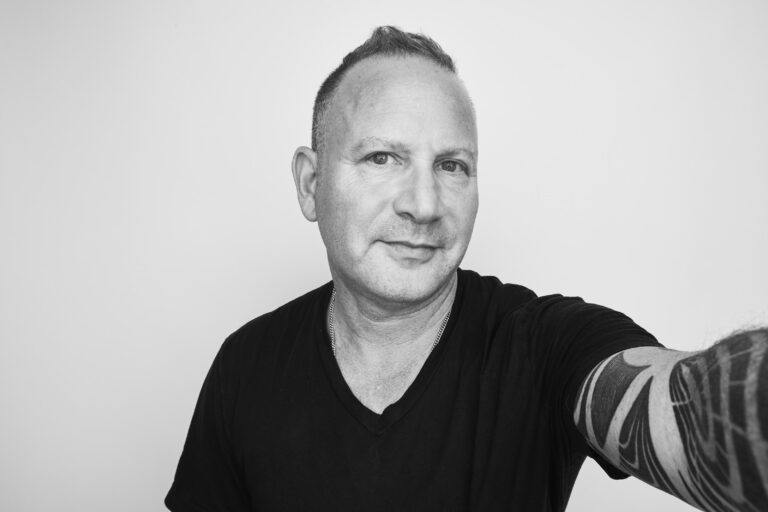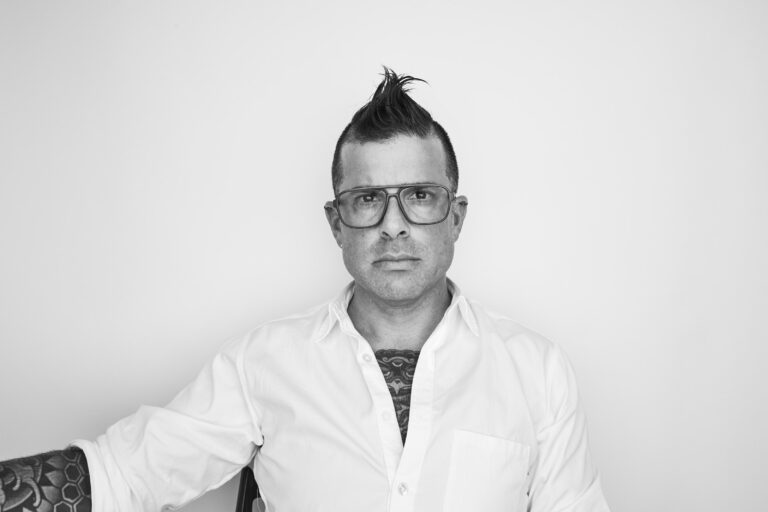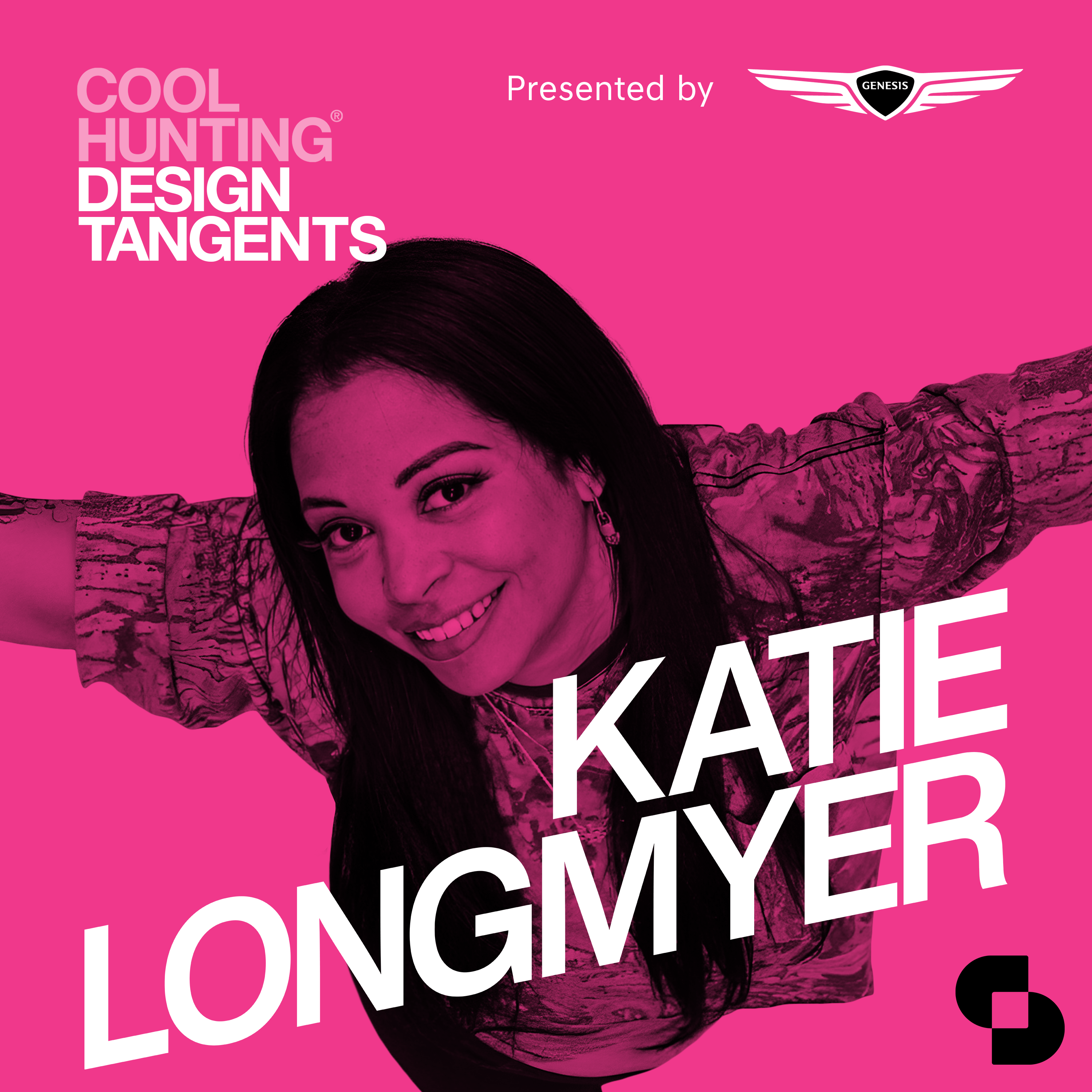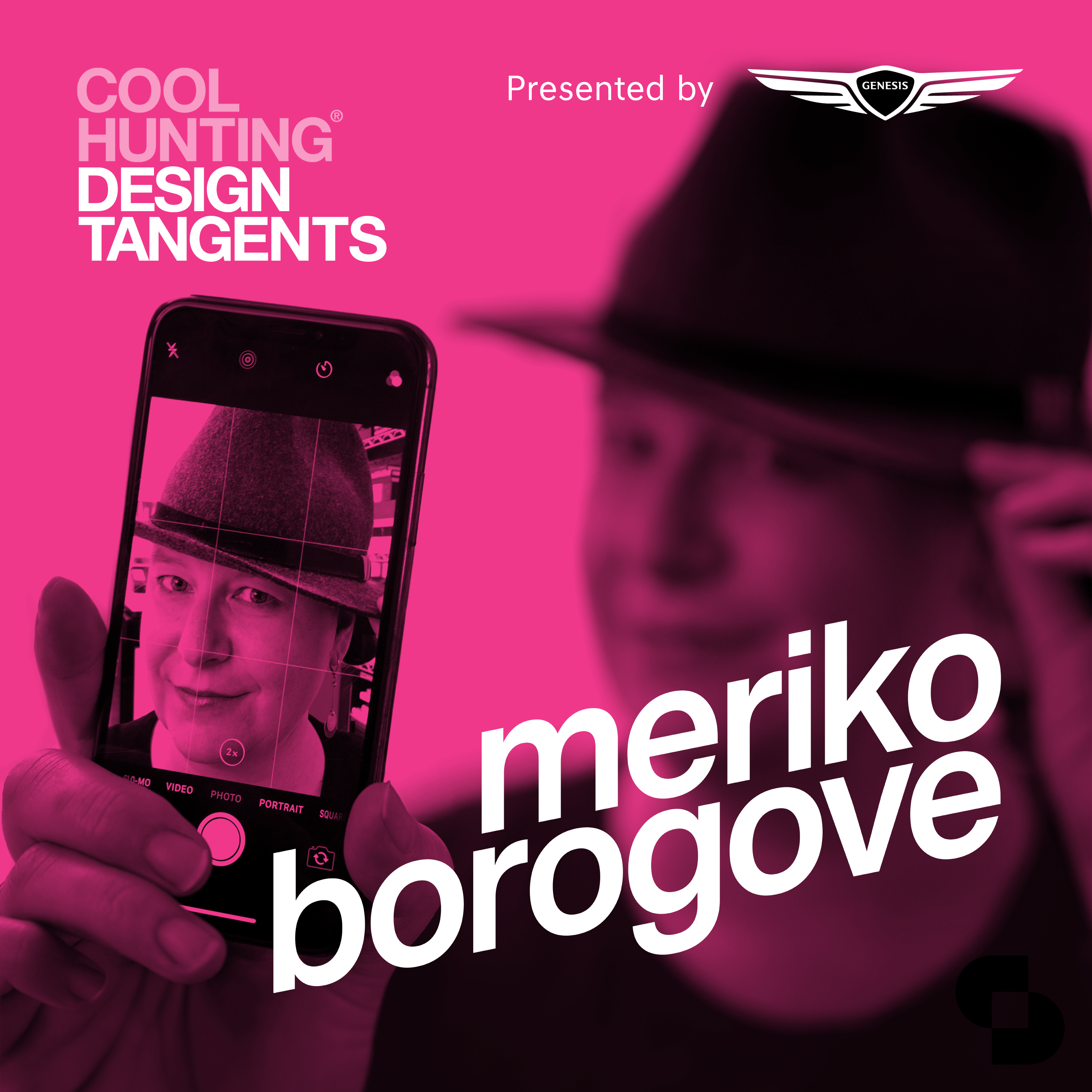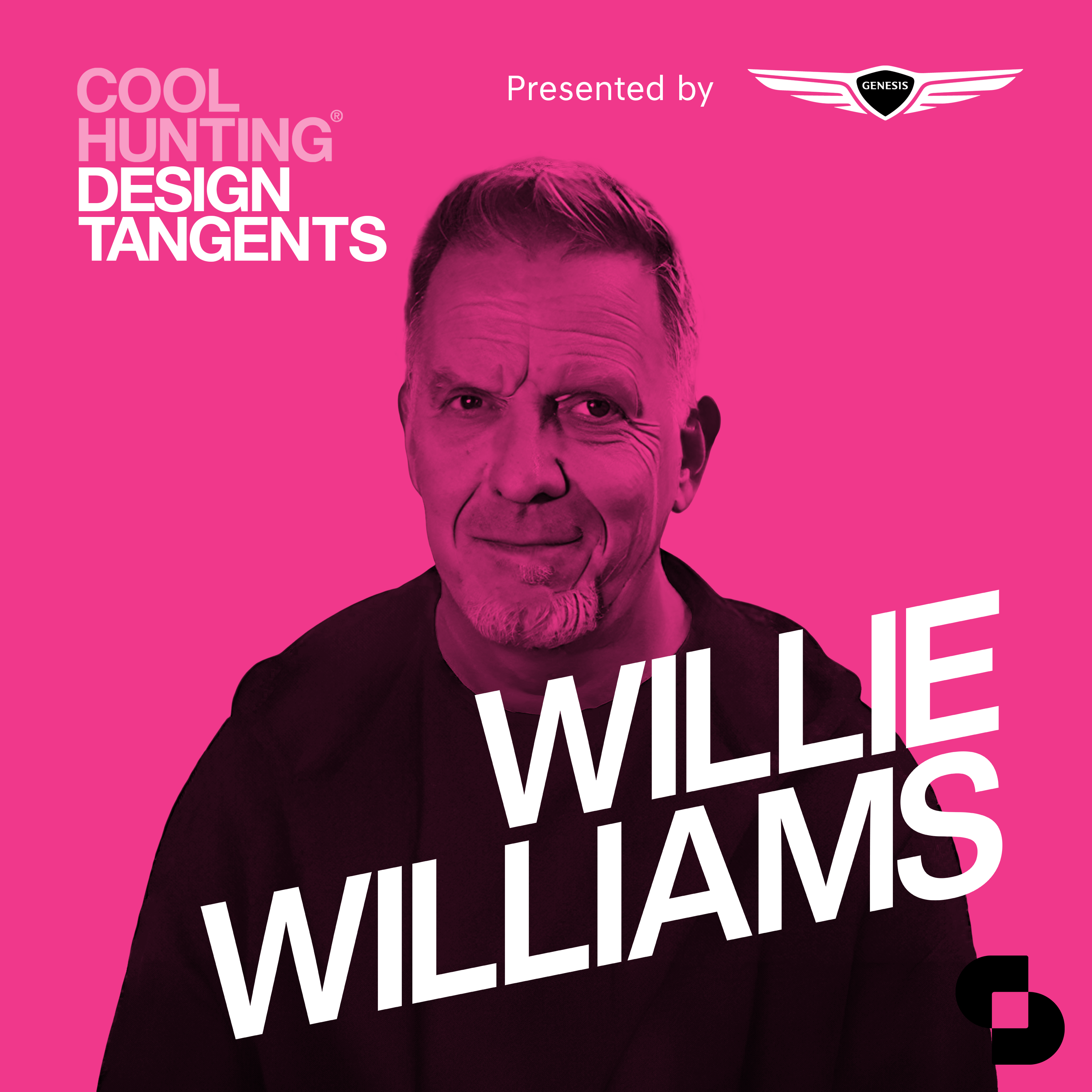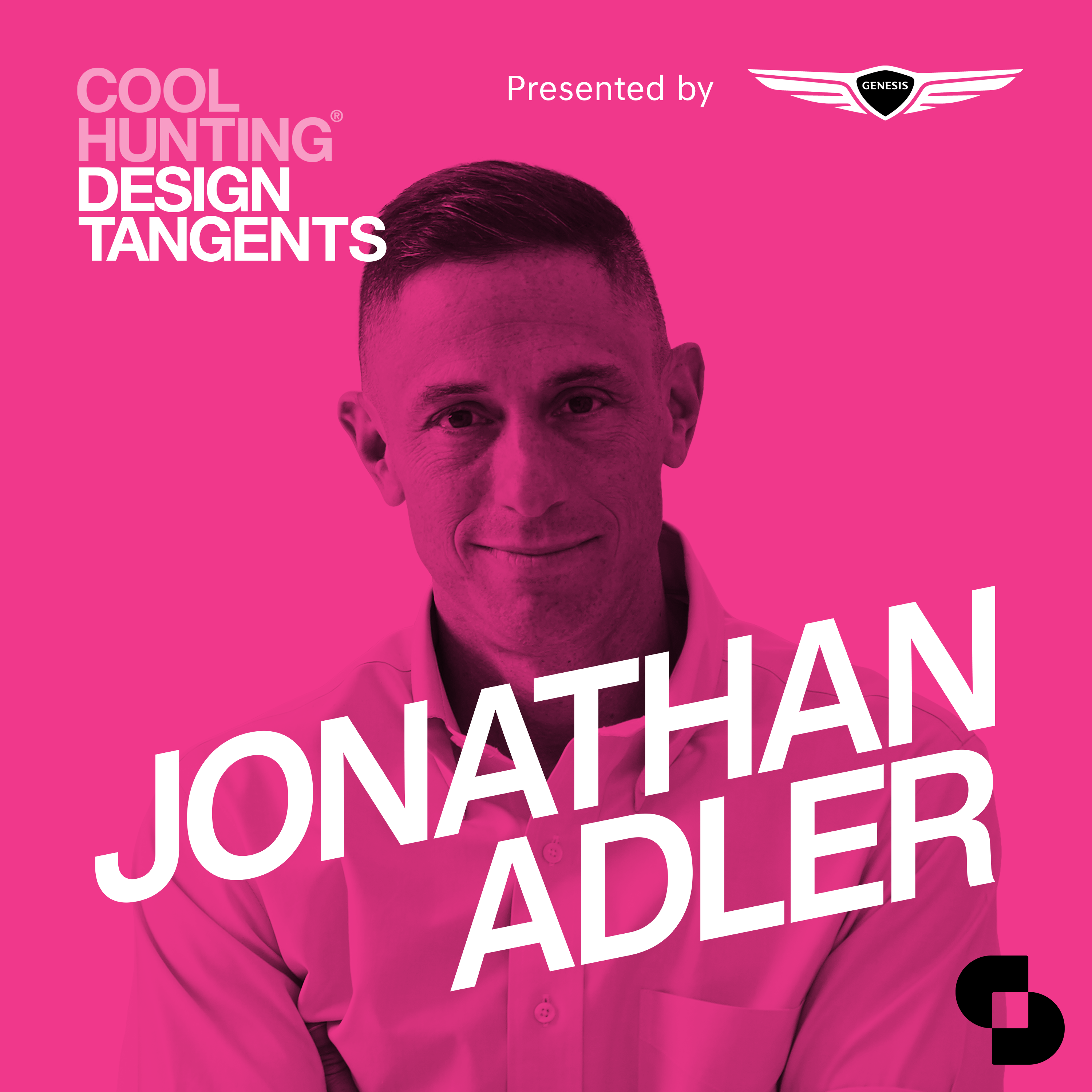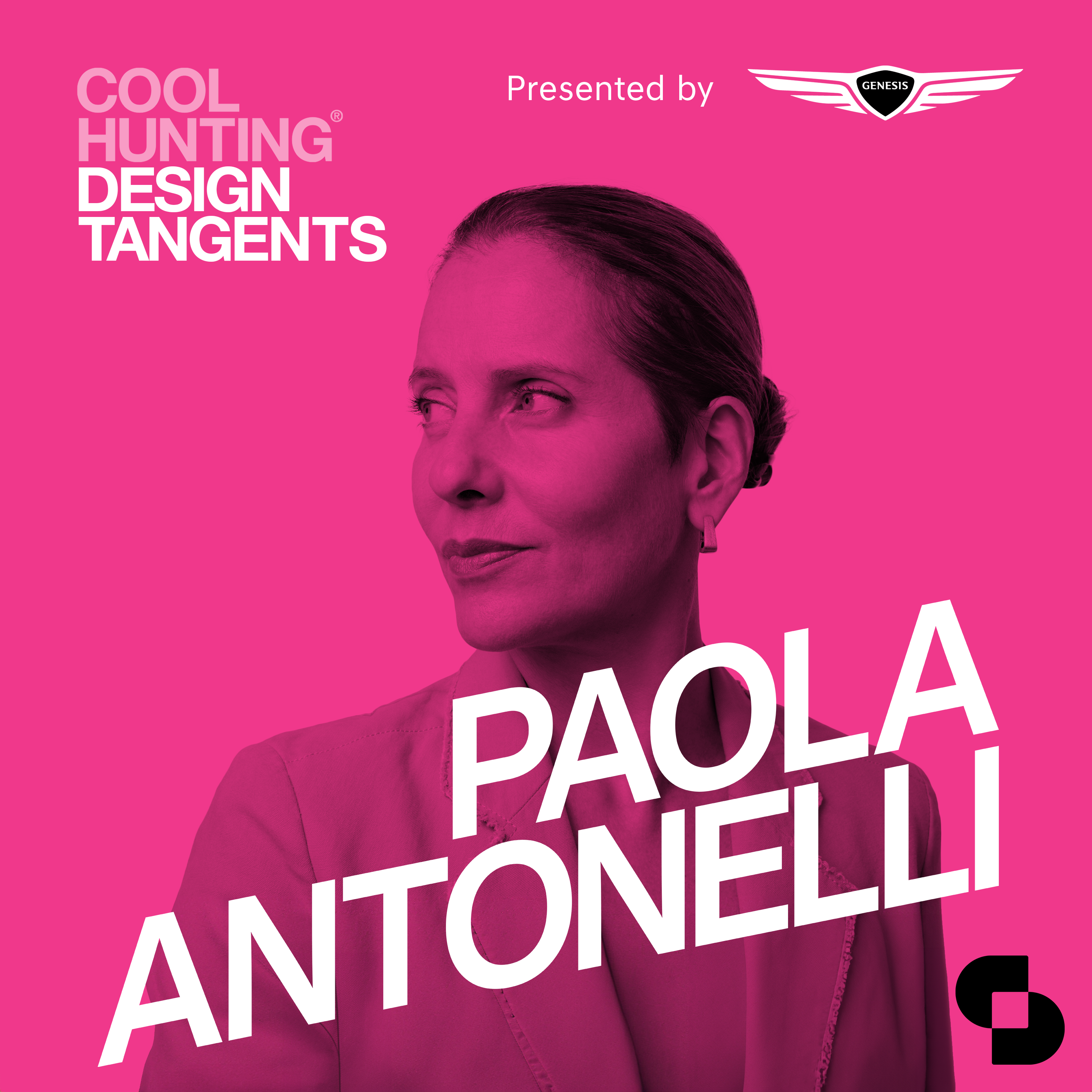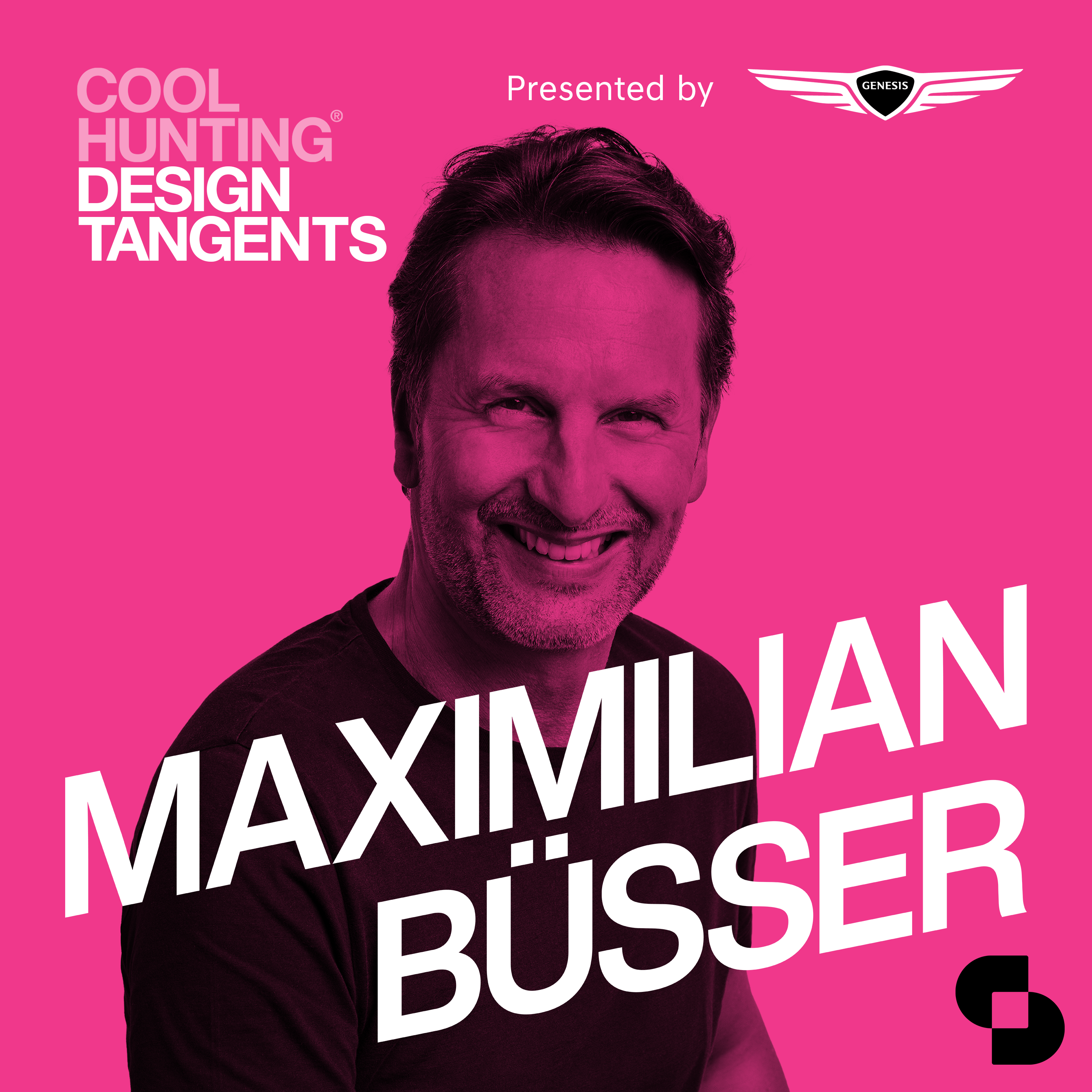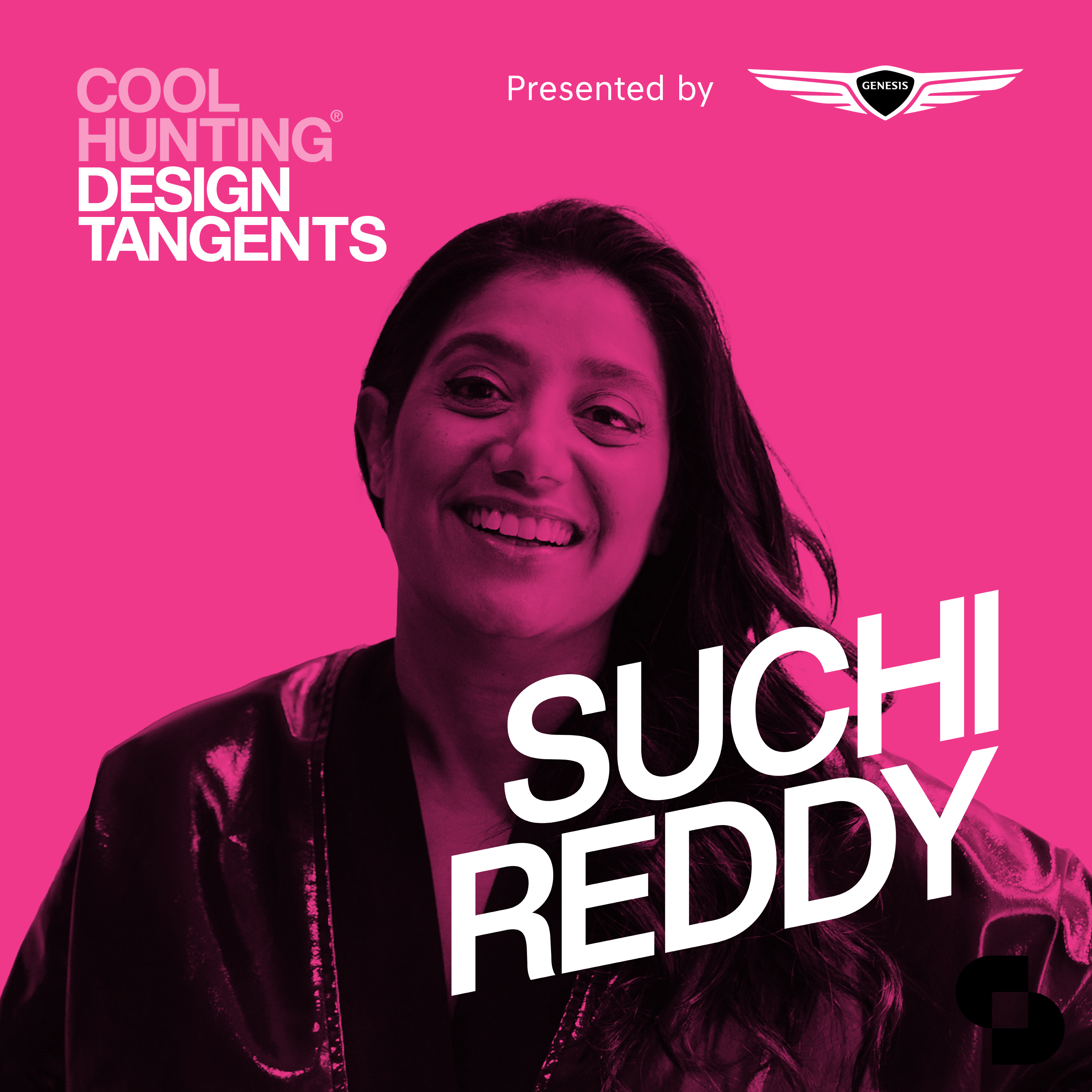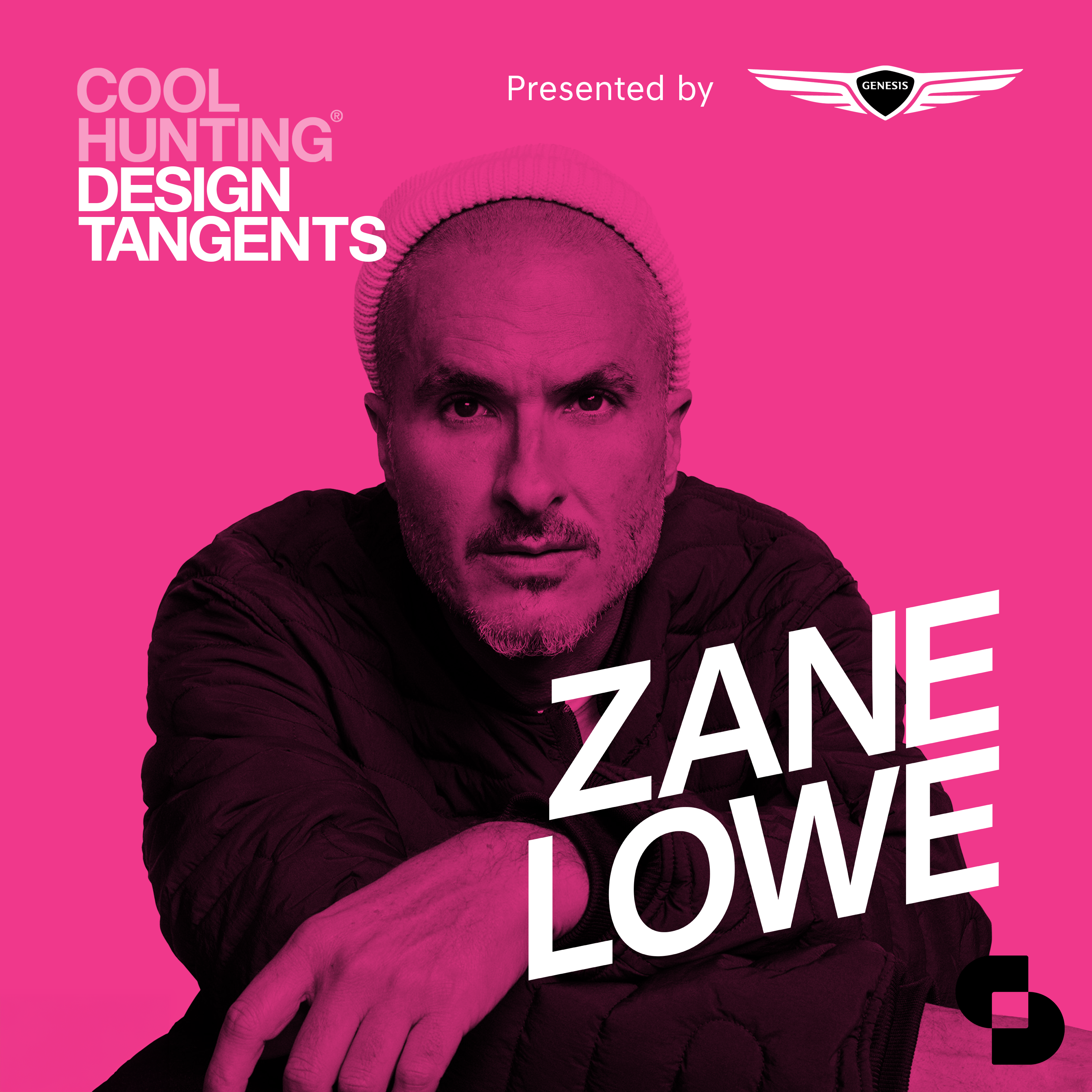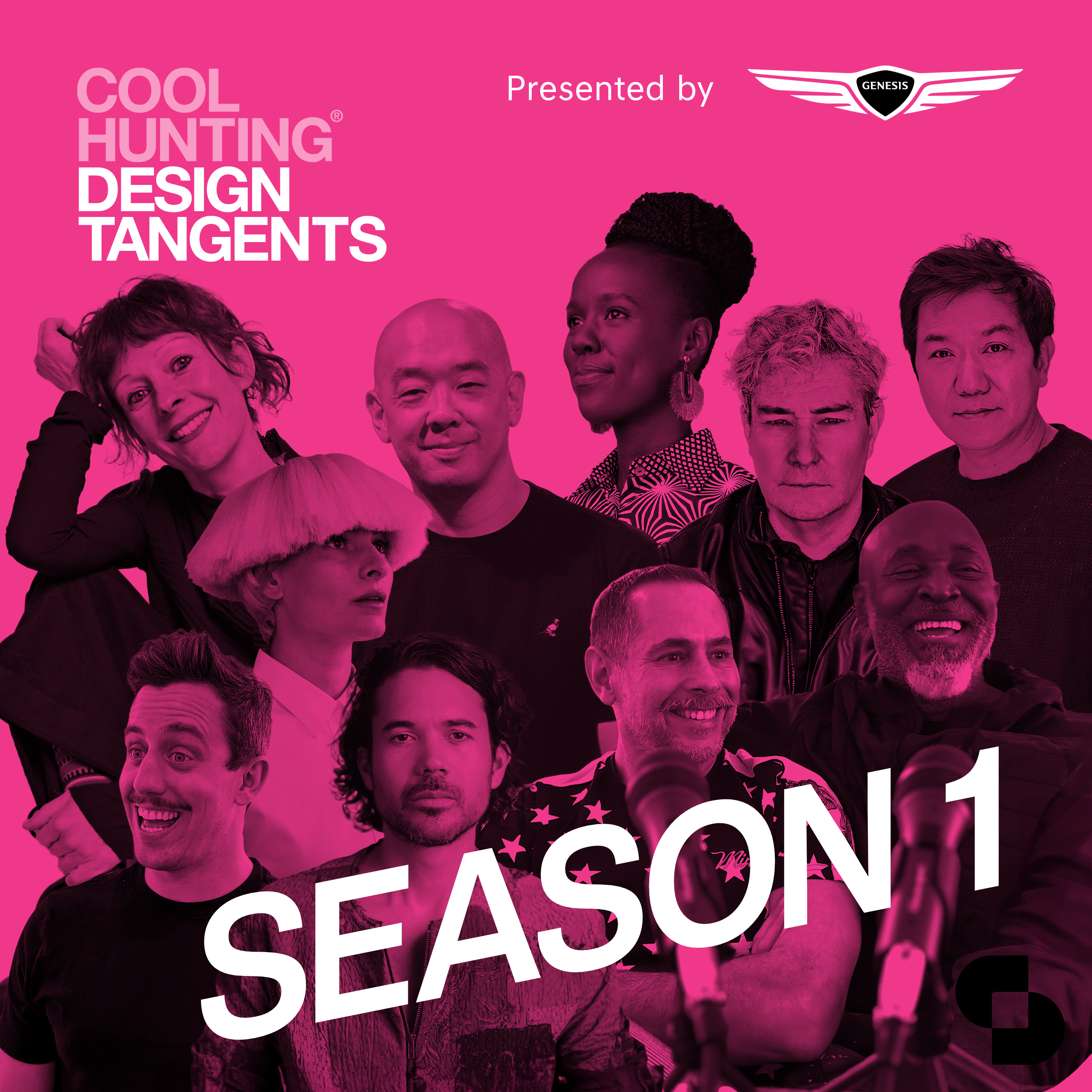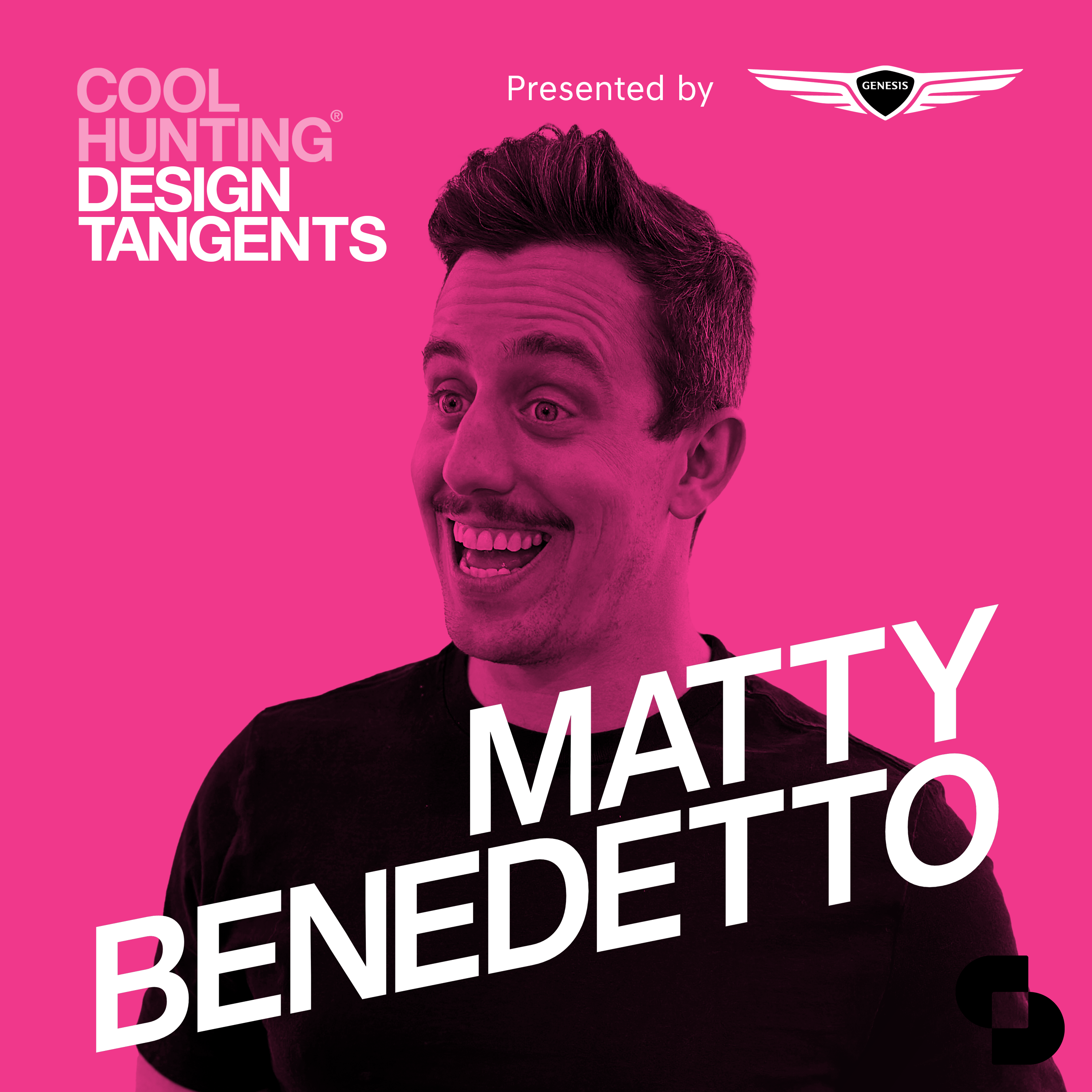It typically takes five years from imagining a new car to bringing it to market. In about that same amount of time, Genesis has created their brand and introduced all new models. The cars and the design leadership have gotten the attention of just about every automotive award around the world, and the brand has fought hard to create its mark in a challenging and increasingly fast-paced market. This is a team effort led by the collaborative dynamic duo of Luc Donckerwolke and SangYup Lee. Josh and Evan traveled to Seoul to immerse themselves in Korean culture and learn how innovation has been accelerated across a range of businesses, including automotive. In this episode they sit down with the creative duo, who they’ve known for the last decade, to hear how they’ve developed the Genesis brand, built a team, design cars that people desire, and bring the brand to life across the many touch points that people interact with. Feel the love and learn about the power of design.
Links:
Discover more shows from SURROUND at surroundpodcasts.com.
This episode of Design Tangents was produced and edited by SANDOW Design Group.
Special thanks to the podcast production team: Rob Schulte, Hannah Viti, Wize Grazette, and Samantha Sager.
Transcripts, show notes, and links for each episode of Design Tangents can be found at surroundpodcasts.com/design-tangents
Luc Donckerwolke: [00:00:00] My name is Luc Donckerwolke. I’m the designer of the the brands of the Hyundai Model Group. I’m chief creative officer for Genesis.
SangYup Lee: My name is SangYup Lee Head of, Hyundai and Genesis Design. I’ve been a car designer almost 30 years, and it has been wonderful.
Josh Rubin: Welcome to Design Tangents, a podcast that goes behind the scenes with creative change makers to learn about their work, inspiration, challenges, and philosophies.
Evan Orensten: I’m Evan Orensten. And I’m Josh Rubin. We’re the founders of Cool Hunting.
Josh Rubin: We’ve been in Seoul for a few weeks now. It’s our first time in Korea, and we’re definitely loving it here.
There has been so much innovation in tech and fashion and film and music and beauty in a relatively short amount of time, and it’s been quite fascinating to dig into how that’s all happened and [00:01:00] where it’s going.
Evan Orensten: Korean Automotive is. A huge part of that evolution that’s happening here in Korea and in Seoul.
And honestly, Josh and I believe that Genesis is really leading that and bringing Korean design to the map and to the world in a way that’s, that’s really exciting to observe. We’re really grateful to be here today with two people we’ve known for a long time. Luc Donckerwolke and SangYup Lee who are leading design at Genesis.
Josh Rubin: We’ve known these two for more than 10 years. They’ve known each other for closer to 20 years and
Evan, and I feel quite privileged to have witnessed their journey. It, it, it feels like, uh, Moment right now where they’re flexing to their fullest potential as designers with the work that they’ve been doing at Genesis.
Evan Orensten: And that’s not just our opinion, really. The automotive world agrees.[00:02:00]
Genesis has won some pretty spectacular awards. For the cars behind the scenes for many, many years, and there’s another award called the World Car Person of the Year, which can really go to anyone in the automotive world and uh, Luc and SangYup, you had that honor. It’s pretty incredible that two people at one company would have that back to back.
It’s impressive. People are paying attention.
Josh Rubin: You’re fine tuning vehicles coming to the market in the next year or two, and you’re designing vehicles. For three or more years out.
Evan Orensten: It’s a huge industry that impacts almost everyone on this planet, and yet the number of people who actually design cars is around thousand or so.
It’s not a big number of people who have such an impact.
Josh Rubin: It would be nice to just get a little bit of background, so Luc. Did you always wanna be a car designer?
Luc Donckerwolke: Actually, yes. Um, although my previous life in [00:03:00] South America were a different environment, but I always dreamt about, uh, cars never I would be able to do.
Cause I was very early that only Italians. Get to become car designers. Um, so it was a bit of an irony that I ended up, uh, designing Lamborghini one point, but I think we were both made to beome designers from the very beginning.
Evan Orensten: SangYup. How do you feel about that ? Is that true
SangYup Lee: now? Yes. But when I was a kid, um, I was born and raised South Korea, literally back in the days.
There is no car culture here in Korea. And I like the art, I like sketches, I like drawings. So decided to become, uh, uh, the fine artist sculptor. And I quite enjoyed that and really enjoyed that. But when closer to graduation of the college, I was getting nervous because I had to ask myself, [00:04:00] cuz normally the artist, in order to become, you’re able to sell your artwork, you should go through this, uh, period hungry time in twenties and thirties, and I was not brave enough.
So instead, I took a backpack trip all over the world in US, Europe and Japan, and externally I found our center College of Design, car design school in Pasadena, California, and went to the school and I saw students actually making a car outta clay. So I was talking to myself. Maybe this, I can do it. So that’s how I started.
There was a lot of difficult challenges cause uh, most of my classmates, they’re all car guys and me, like a Korean guy doesn’t speak English properly. And going over there without no sense of car culture, it was a quite challenge. But at the same time it was [00:05:00] quite fun. Cause you were learning from the very beginning.
It was a wonderful journey. Almost a 30 years of career ever since traveling the world. Amazing current design together. Amazing design and work together. So now I think about it meant to be a designer from the beginning.
Evan Orensten: You just didn’t know it.
SangYup Lee: I didn’t know it.
Evan Orensten: Did you ever work in play?
SangYup Lee: I did a lot of human figures and also the uh uh, kinda abstract sculptor.
Obviously after clay work, we always do it at the metal cast and do the bronze or something else.
Evan Orensten: People may not know that clay is still used in auto design. Right. Um, maybe not entirely through the whole process as it used to be. Um, but it’s still a big part of the design process and that’s augmented by all the really exciting technology that you’re also able to use in designing
cars.
SangYup Lee: True. And a car is emotional product. And we do a digital like. Start to finish. But there is certain point you [00:06:00] need to have a hand touch. Like, it, it, it could be like a point five millimeter, but it keeps you different feels to it. And this is why the touch of the clay is very important sometimes.
Evan Orensten: And, and literally looking at the clay.
Cause you build, you build smaller clay models, but you also build full size clay models. . And you look at them inside and outside, turn lights on. Turn the lights off. Right. You’re touching them, you’re looking at them. To really understand how it
sits.
SangYup Lee: Right. And the balance, obviously the big picture, the small, and uh, normally the process we clay, but at end of it when we do the validation and the digital data we always use clay, obviously the details. At that stage we actually make the hard model details of course.
Luc Donckerwolke: It’s also the fact that when you switch off your screen, your digital model is gone, your virtual model is gone, but the physical object is always there. So you can pass 5, 6, 7 times on the way to meetings in front of the [00:07:00] model, and your brain always memorize something and at the end of the day, You know that something is wrong with the model.
You have this alert in you, this kinda vibration in your, in your eye that tells you you have to change something. This is the great thing, having a physical object. So this is why we always have physical objects. Even if we fully virtual in the creation of the, of shapes and the volumes,
Evan Orensten: clay is happening faster maybe than it used to, and the design process is kinda changing around the technology, but still, Ensuring that clay is part of that process for all the reasons you just
said.
Luc Donckerwolke: Yes. It’s also need a human relation , in the end the product is made for for users. So we need this interaction already for the car, the vehicle as well from the very beginning.
SangYup Lee: It’s a very, uh, important part cause uh, many tools you have, you have a better opportunity to better research. You can outta [00:08:00] it. Obviously don’t get me wrong, we are fully digital, virtual and actually the digital all the time.
But when you are always concentrated on one tool, sometimes you get missed off something. So when you actually switch, To this way versus the other way, then you actually wanna see, uh, you see the different perspective outta it. Design is a very delicate work, so sometimes, depending on what type of pen you sketch, the reserve varies color pencil or, or like a ball point pen and a pencil is somehow, the fields are
SangYup: quite different.
Luc Donckerwolke: Yeah. Each tool we use changes, changes almost the register forms and, and, and, and volumes we do. Um, and, uh, interesting enough is we’ve, we are just, uh, getting a new tool of, of, of tools is [00:09:00] the ai, and this is influencing as well. It’s on, it’s only going to be a tool because in the end you have to steer it. But, um, it’s again, one of the tools which was gonna influence the way we, we create
Josh Rubin: The two of you have worked together on many things over many years across different companies as collaborators.
Was there immediately a creative spark? Did you, did you immediately find your rhythm and, you know, how has, how has that kind of teamwork. Changed or evolved?
Luc Donckerwolke: I think so. I mean, um, you mention
SangYup Lee: begin with, was
Luc Donckerwolke: it exactly? No, I think, I think we always had this kinda a process of bouncing ideas back and forth.
So there’s no, there’s no boss between ourselves. We are eye to eye and there’s, we are designers and basically when, when I share an idea, uh, I know that it’s going to be [00:10:00] the start of a. Creative exchange where SangYup is going to tell me, yeah, but if we do that, maybe, maybe we should do this. And, and basically, um, end result is further than we, the first idea we had. Due to this..
SangYup Lee: Bouncing back and forth together. And this is what makes us very strong.,and when we talk about design. I already see Luc’s head. There are certain shape and certain forms in his head, and I see that through his forehead actually. And uh Okay. And he’s really great in that sense. And I take it and afterwards I question to myself, this is what he thinks. I totally understand what it’s, is this good enough?
Then I always do the, uh, second afterwards. Based upon this, sometimes, uh, contradicting, sometimes actually variations in many different directions. I will show that [00:11:00] to look afterwards and Luc will, take it and he does the same thing. Pass it back to me. So this is actually our creative forces. Very strong.
Normally you don’t find this design industry and I really, really enjoy, uh uh, this is our. Challenging spirit. It’s actually, Luc is quite good cause a lot of designer, as you know, they’re quite egoistic. , but he’s not working that way most cases. He actually prefer that I offer over what he offer from the beginning, which is always fantastic.
And always there is uh, uh, two commoning personality-wise. Uh, Luc likes the challenge. Me too. I’m a trouble maker and he is as, well,
Luc Donckerwolke: yeah, we we’re creating quite a lot of trouble uhhuh. But, uh, but you know, the great thing is sometimes you have to protect your team members from your ideas. And this doesn’t happen between SangYup and [00:12:00] myself.
I know that. SangYup is going to say, well Forget about that. That’s, or, or he’s gonna take that idea and, and make it evolve. So it’s something that we, we have a, a really. Honest and, uh, unfiltered and filtered. Mm-hmm. Uh, relations. So where we basically, um, I know that I can tell him about a real stupid idea. And, uh, on the other hand, uh, you know that, um, some people will never be as receptive to your, to your ideas or sometimes it’s, it’s just, it’s really the spark of, of something and, uh, and we have this exchange that allows us to, to, to, to create out of some input something, something great.
SangYup Lee: Luc is my boss, but he is much more than that. He’s a, a designer. I, uh, respect. He is also my mentor and he’s my friend. He’s my family. So this is really, really great. [00:13:00] We are designer. Even though we are actually in head of head positions we’re not politicians. We always challenge with each other to create a best design, which actually, uh, created value to customer, the story to customers.
Luc Donckerwolke: Well, that’s, that’s also an important point. I never wanted to be a boss. And, uh, we are designers and I always say that actually I design for free and SangYup is exactly the same. We would actually pay to design. Um, I only accept. My income as a compensation for the hours I spend in the meetings, uh, that I get paid for,
rest, spent a lot of hours.
Josh Rubin: Are there elements of designing here that are distinctly Korean? Right. We, we’ve, we’ll
talk about, um, the output of
design and, and what. You’ve brought to Genesis cars that are distinctly Korean, but behind the scenes, are there elements of the [00:14:00] process that are, that are distinctly Korean? Um, or is, is it more, uh, spiritual?
Yeah. The process that you’ve created as collaborators?
Luc Donckerwolke: I think the first thing that struck me as a non-Korean arriving in Korea having gone through through lot of different companies, where takes time for to accept your idea and
ideas. Process and executed. That doesn’t happen in Korea. People are eager to get your input. Um, you know, in a of companies when you working, you have a feeling after two or three days that
should not disturb too much The organization. This is not the case in Korea. People are just willing to, and this from the first day you arrive, you have a new team of people and uh, and then the, they are just waiting for you and you have to be careful because. [00:15:00] You cannot think out loud because people will take your, your inputs and execute them immediately.
They’ll come back the next day with a result and they’ll say, what is this? I say, well, you, you asked me to do it. Say no. I was just thinking out loud. It’s done. The next day it’s done. People run to execute and this is, this is something which is for us extremely motivating. We want things to do to be done.
And, um, we don’t have, because the, the problem is if you have to wait too long, you have new ideas and the old idea is not good anymore. Um, so the fact that things get done immediately is, is, is, is something that you will never find anywhere else. This is my, that was my first impression of, of working in Korea.
Evan Orensten: And this is not said lightly. You’ve lived in whatever, more than a dozen countries you’ve visited. Dozens more than that. You’ve seen how people work and operate, and yet this really struck you as being something unique and
Luc Donckerwolke: exactly the first thing you have to understand is how people function, the [00:16:00] mentality, the way they, they they think so that you can try to communicate in the language and not talking about pure language, using the right words to motivate people to understand your, your inputs.
Um, And, um, that process quite long. In some cultures in Korea, even if there was a, a language by a communication filter, um, people just want to, to, to receive something. And this, this is, that struck me from the very beginning that you cannot slow down this country.
SangYup Lee: It’s very dynamic. Um, yet there is a calmness always exist together.
It’s almost like a contra duality. I mean, it travels in the city quite a bit. There’s a digital versus analogue there is a old tradition versus very high tech, [00:17:00] and you get like a duality everywhere in the whole city, which is actually quite unique part of the culture and. Luc mentioned this, uh, commitment to deliver the mission is so strong in that sense, and, but they really like to enjoy, and this is why culture, lot of culture develop.
But if you think about it, Korea has been born out of ash literally flat, after Korean War 1950, so it has been. 70 years the Korea to reborn again, and this fast pace really what makes country very dynamic at the same time, very diverse. I tell you, when I left Korea, uh, was 1990 country, it changed so much. And six years after I came back, I, I live in the different country.
It was actually developing [00:18:00] country. There’s not much culture going on, but within the 26 years, country has changed like a left to the right upside down
Evan Orensten: and it’s still changing. Right?
SangYup Lee: Still and, and sometimes we were joking to, I was joking that he went back to Germany, come back in two weeks. Hey, changed.
That’s how we took around.
Break 1
Evan Orensten: It takes a long time to design and make a car and bring it out to the market. Everything we’re seeing today is stuff that you’ve hands on, you and your team have brought together by scratch .And now you’re able, to see the full vision. At least the vision you had five years ago of where all of this is, is at, and how it all comes together and how it all presents itself. And we know obviously, that you’re working on lots of things that are coming out next year and five years from now. So you’re, [00:19:00] where you’ve started was just the beginning of that.
And now you’re much further along
Luc Donckerwolke: before designing products. You design the team, then you design the process, then you create a dna. And then you start applying it. So in the meantime, everything you do is reacting and fine tuning, optimizing, trying to correct things that you see that you would’ve done differently because you have to adopt those, those products already as if they were done by you.
Um, so it takes time to get, let’s say, the first generation of cars with your dna, um, because I think it would be a mistake to start immediately. Designing the product. We had to take patients to get the right people. It’s a process and, and, uh, it’s a great phase because you are constructing the foundations of what you’ll be doing later.
It requires a vision, [00:20:00] and at the same time, you have the whole, the whole company that is is there waiting and say and, and, and. Uh, so, so you have to. Try to calm everybody down, uh, because again, uh, to create a new brand like Genesis was the fact of us brainstorming. We have a, a tradition that we tend to draw a lot in the lounges in the planes together and bouncing ideas back and forth.
So sometimes to get outta the office and to sketch on the. Romantically, a napkin or a piece of paper is, or, or, or the iPads, um, is, is something that brings us more than, than being, um, in a big process, in a big meeting room, in a big, uh, um, let’s say get together with our designers. And then we bring those, those ideas back to our designers and we say, ok, let’s, let’s, let’s take this as a start.
SangYup Lee: Are so much fun, sketch competition, [00:21:00] and I like that.
Josh Rubin: So of course it’s very easy for us to make the leap to the design language of the genesis with the two lines, and that as an expression of this Korean duality. Perhaps. Can you think back to the moment of landing on the two lines as. One of the core elements of Genesis design.
SangYup Lee: It was a quite fun journey and when we started the company and we always threw idea back and forth about, uh, Genesis Identifier as a luxury street brand at the time, obviously a lot of people around us outside of design started asking How you gonna differentiate Hyundai and Genesis? Hyundai is a volume brand, genesis, luxury brand, different path.
And it’s not about differentiation, it’s about how to create [00:22:00] value for the brand, the identifier, something we can carry on for the long, long time, like a Coca-Cola bottle. So in the beginning, instead of putting all the design together, we’re actually people outside asking, so what luxury brand Genesis should be?
And what type of luxury are we talking? In the meantime, we’ve been actually discussed quite deeply every day. What is the Genesis identifier, what level of the design we have to deliver what makes a design timeless because timeless equals designs Luxury . Then lens character is becoming more important in the car design. There used to be all, it’s a truly functional part.
There’s only a few supplier make the lens. So that’s why all the round head is more likely not many suppliers back in the days. So you use that for British car and uh, Italian cars, if you take a look at it, there’s the same part, but lamp [00:23:00] become very important signature for the brand as it gets high tech and as it gets, um, the EV obviously you don’t need a traditional grill shape.
So we actually talk about lamp character quite a bit. Should we do like the Genesis G like Chanel and Louis Vitton, uh, they always actually made the, uh, their logo and letter out of the lamp. So we’re trying to execute like a G. It’s just not simple enough and it’s very busy in the car and it
Luc Donckerwolke: didn’t work cause you had a G on one side and had G on the other side, so was wrong.
SangYup Lee: Then every morning we talk about the subject. In the plane, in the office., and dinner…, and, and one day I still remember it was very early in the morning, six 30 in the morning. We’re actually looking at the clay model together. Um, and Luc. put very thin, one tape line [00:24:00] on the car. This is very pure and little bit empty, just one thin line. So they put another line underneath of it and we’re actually asking questions together.
Isn’t this something that Korea culture, it is related like yin and yang and duality of the culture. We’ll look at each other. Maybe this is it. So that’s how it started.
Luc Donckerwolke: It was a bit too simple for a lot of people, so we thought we were on the right path because if you don’t have resistance, probably have not gone far enough.
But we were facing a lot of resistance.
SangYup Lee: Oh yeah, big time.
Luc Donckerwolke: Because it was too simple. After this, this orgy of forms lights that were huge aquariums, which I used to call them so that you basically need the contents, with a lot of chrome stuff, and then suddenly we had this, these two little [00:25:00] lines where there was hardly any space for technology in there and not even, not even less for, for decoration or ordimentation.
It was, it was too pure for people. So somehow we knew that. That was, that was it.
I think it was a quite interesting, uh, especially, it was huge challenge engineering side of
it, because Luc mentioned an Aquarium. The headlamp lenses… tall and big. It’s very easy to have a light source going through the lens..,
Without any like, uh, limitation. So you can have a maximum function audited, but when you have a window getting thinner and thinner and thinner and thinner, same amount of the light has to go through this smaller window. It’s a lot more challenging. So engineers, uh, they asked us, why do you have to make the lens so thin it’s so difficult for us?
SangYup Lee: And. Are you sure this is what [00:26:00] you’re like to do? And we said, absolutely. As a thin as much as possible. As a matter of fact, that um, G 90, uh, two line headlamp, the thickness on each one is uh, 32 millimeter. The thinnest lamp in the world is only achieved by MLA technology. We are the first application in that technology,
Luc Donckerwolke: and this come back to the distinctly Korean this.
Brilliant idea would’ve been so brilliant if it would’ve been done somewhere else in Korea. Cause we would’ve not had technology to make the work. So, um, it, it’s again, the context of creating something that was only possible in Korea.
SangYup Lee: And this were quite interesting because, uh, it was, uh, Lot of people against only because, uh, people still get used to have a front of the car as a face.
So you got a big eyes and noses grill and a lower openings mouth. We break the rule, [00:27:00] basically a 14 lights two on each side. No bumper, properly clean, all the way top to bottom. So it was actually. Was not quite supportive, but when decision made and how they deliver is unbelievable speed and level of execution.
It was great experience.
Evan Orensten: It’s such an exciting time … From a design point of view, because traditionally there’s three main areas of what design. You have people who are working on the interiors, people working on the exteriors, and people who are working on colors and materials. And with everything that’s happening today with electrification on different, um, technologies coming in, the importance of lighting of sound mm-hmm.
Of user experience and technology, um, displays, those are now primary. Areas of concern for auto designers. It’s not just the, the bigger shapes and interior, [00:28:00] you know, materials that we’re thinking about
Luc Donckerwolke: and chrome was a differentiator. Light is a new chrome. So, so there’s been this, you know that cause you have day running lights, which are, have a stronger impact on the, the recognition of vehicle from a distance before it was a chrome grill, was, which was allowing to from one car to the other.
So that change technology, uh, changed the relevance of some elements for the differentiation.
Evan Orensten: Yeah, I love that lighting is the new chrome.
SangYup Lee: Yeah. Furthermore, The EV transition, how we look at the EV is basically smartphone. The wheels. We have to think it differently. This is what beauty about this job. You constantly have to challenge yourself and a team to create, uh, the value and the story out of it.
When car was, uh, interior space was a driving space with force, it [00:29:00] doesn’t work no longer that way. It’s the, uh, space, the living space. Then uh, all furniture, how to design. It’s a digital space’s, a connected space. The notion of the car interior it’s not like a used to be anymore. So this is actually the part of job we constantly challenge.
I must say the role of designer is getting wider and wider and wider.
Evan Orensten: Yeah. That’s really exciting.
Luc Donckerwolke: And there’s also another factor is that if you look at what’s happening with the, with the evolution of the, the technology with autonomous vehicles becoming. Close and closer to us. The, the concept of projecting light on the road to see is actually an old concept.
It started with a candle and a reflector, and then it, you had different amounts of different evolutions of bulbs, uh, than you had led. And now the, the light is going become a light signature’s gonna be, um, [00:30:00] uh, almost like a, a pure. Differentiator rather than a technology to allow you to see to cause you have guiders, you have radars, you have uh, uh, lasers that will substitute themselves.
They’ll be become your eyes. So that is changing. This is why we believe that those minimalistic lines, those quad were actually a way to open up. Uh, the evolution of, of the design identity of Genesis. At the same time, it implies a certain Darwinism where an organ that is not needed tends to disappear. And so it, it’s all related.
SangYup Lee: Mm-hmm. And furthermore, complete autonomous driving. It will take some time, but eventually we’ll come, we’re questioned to ourself when really become more, uh, autonomous driving. Head lamp has to be that bright because it, it sucks about the electricity. I mean, if it car is driving for you, then why do you need [00:31:00] so much brightness in the head lamp?
So that is one question. Maybe in the future the head lamp doesn’t have to be as bright as we have at the moment. That means we can. Our two lines even more so I think this is one of those things we always actually ask question bouncing with each other all the time.
Break 2
Evan Orensten:
The New York Auto Show, you’re debuting the new GV 80 coop concept. Can you tell us a little bit about what we’re gonna see or what we’ve just seen depending on when you’re listening.
SangYup Lee: This car is a two meaning, uh, in our portfolio, it’s uh, one of, uh, it’s actually Genesis is will become the EV brand, starting with 2025 and into the 2030s
And this is the last IC based car.
Evan Orensten: So IC means internal combustion.
SangYup Lee: Exactly. And on the top of it. But more importantly, genesis design is [00:32:00] we call this exterior athletic elements, and though we won’t have a big SUV emphasizing a more sporty and athletic side, this car really reflect the vision and design and exterior.
Luc Donckerwolke: When I was writing the, the brief, I tend to say the devil is around the corner because it’s kinda a more extroverted, um, uh, element of the family, the lineup.
And it’s also, um, um, a teaser for the fact that we are going to increase the adrenaline. Content, in the lineup. Uh, starting now we started making sedans, business sedans. Then we brought lifestyle vehicles, SUVs, and then we started looking for icons, speed convertibles. So we are gradually increasing the level of emotion from, uh, into, into the lineup of, of Genesis.
And that vehicle is there to [00:33:00] be, Let’s say an ambassador of what is going to happen in, in a more extroverted, more, um, sporty, more athletic, uh, we always have the duality, the two lines, the Dr. Jekyl and Mr. Hyde. The, the, the, the athletic and elegant side that we have to combine those antagonists that we, we like to play with to create tension.
Um, and, and this is, this is the car is reflecting those, those parameters together,
SangYup Lee: car. Has this character, which is very athletic, lot of muscle handle, extrovert character, which is actually a little different than, uh, the mainstream SUV. So it’s always great to have a balance of the left and right as a portfolio.
And this will really show us what our mainstream suv. Can be more extrovert, more, uh, athletic [00:34:00] side of it,
Luc Donckerwolke: and at the same time it has to be elegant so we don’t want to be vulgar just because it has more
adrenaline.
Josh Rubin: I have what might be a bit of a funny question, but when we think about luxury, when we think about brand with any car, you know what, what we, what we see, what we hear sometimes what we smell, certainly what we feel is easy to understand and describe. but the sense of Taste is, uh, usually not included when we think about a car or an automotive brand.
If you could eat this GV 80, what would it taste like?
SangYup Lee: Hmm, that’s interesting.
Luc Donckerwolke: Hmm. I think you gotto there,
SangYup Lee: there was a one restaurant right there reflect in Seoul. Maybe I should take you guys over there. Yes, it it has a really nice rhythm. It has a punch. Like a little bit of sour to keep up more freshness.
That is the food I would like to [00:35:00] communicate.
Luc Donckerwolke: Yeah, I think it has, um, going back to my, my African origins, a bit of a peneple in there, uh, which is yes, exactly it, uh, it, uh, but it, it’s not going to burn you straight away, but you going, it’s going to leave a certain dominance, uh, in your mouth. It’s, it’s all, it’s not overkill you with something.
It’s, it’s about, uh, creating something that wants you to. To have more of it.
SangYup Lee: Right. It has a touch of sour or a touch of spice, but it doesn’t really hurt you. It really compliment.
Luc Donckerwolke: Doesn’t saturate you.
SangYup Lee: Exactly.
Luc Donckerwolke: It just, it just, uh, wets the appetite for Yes.
Evan Orensten: I love that. I think it’s important for people to understand you’re not just thinking about just the car, you’re doing it within the context of the whole brand experience and environment, right, and the way the showrooms look and feel, and that whole experience.
And Josh and I have had the [00:36:00] opportunity to go to your flagship showroom space in suburban soul. We’ve also had the opportunity to go to one of your spaces inside of Mall. It’s quite popular here, and it was really amazing to see both. But in the mall there were seven other brands there. So to be able to see the differentiation and the way that Genesis presents itself, um, so completely differently from all those other brands, uh, was really informative for us.
Luc Donckerwolke: I think this is also part of the chance we have SangYup and myself to be, to be where we are now, is that they’re extremely good designs everywhere. A good design is the result of having top management believing in the designers. If you see a, a good design, you know that there is a good. Management, the good designer and the good management.
If you see a bad designer, you might question the designer, but you have to question the management of the company as well. And, and this is where we, uh, have the luck that what we [00:37:00] do is not only cars, it’s applied, it’s a complete experience around. So we take that experience that is being created by.
Specialists we work with and we transfer this as well into, into our cars, and vice versa. So it’s, it’s a, it’s a taking and giving, it’s enrich as creators, uh, the same time it’s allowing other divisions to do, uh, also great work.
SangYup Lee: Mm-hmm. It’s about whole experience, isn’t it? Like Josh mentioned before. Where the luxury brand want to touch all different five senses.
Obviously taste, you cannot lick the car, obviously. So for me, the taste is all different, 4 senses together to make a certain character it and experience. It’s not just a car itself, it’s the whole experience from the beginning [00:38:00] how we plan. How we deliver, how we communicate, how we execute the whole journey to full of the obsession to details.
Luc Donckerwolke: This is why we say a Genesis design is brand and brand is design. We don’t separate them.
SangYup Lee: This is so important cause uh, how you define Genesis. Genesis at the design brand. And what does that mean by design? It’s not. Typical beautiful styling design is so about holy experience from the very beginning to all the way to the end.
Josh Rubin: This has been a really informative and inspiring conversation.. And again, we’re just so grateful for your time and for Genesis as our partner for this first season of Design Tangents.
Evan Orensten: We’re really appreciative of your work and we’re really grateful. Coming to Korea for the first time has been [00:39:00] incredibly impactful for us and full of really unbelievable moments.
We can’t wait for everyone to be talking about the GV 80 Coop concept. And we’re really grateful for Genesis. Thank you guys.
SangYup Lee: It’s a pleasure. Thank you so much.
Luc Donckerwolke: It was great. Thank you much.
Evan Orensten: Thank you for listening to this episode of Design Tangents with Cool Hunting. Make sure you hit the follow button wherever you listen to podcasts so you don’t miss an episode.
Josh Rubin: Designs tangents is proud to be part of the Surround Podcast Network. You can check out many other amazing design and architecture related podcasts at Surround podcasts.com. That’s podcasts with an S.
Evan Orensten: We’re psyched to partner with The Studio by SANDOW to make our show possible. Huge thank you to our production team, Samantha Sager, Rob Schulte, Hannah Viti, and Wise Grazette. Our theme music is by the amazing Matthew Dear.
Josh Rubin: And thank you to Genesis for presenting this debut season.[00:40:00]
Stay tuned for the next episode of Design Tangents and learn more about us at CoolHunting.com.

